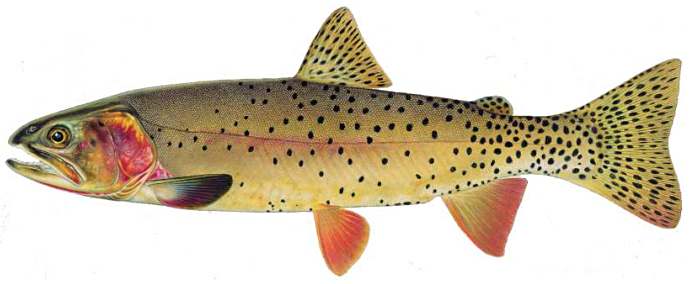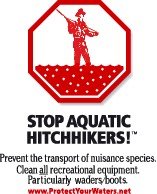NATIONAL PARK MEADOWS
Birth Of Yellowstone ?
click on image for enormous size
-------
-------
 .. The popular story goes something like this: "After seeing the wonders of the region, the campfire talk in the meadow produced a sentiment - to wit - that all this should be preserved for the American People." And thus was born Yellowstone National Park.
.. The popular story goes something like this: "After seeing the wonders of the region, the campfire talk in the meadow produced a sentiment - to wit - that all this should be preserved for the American People." And thus was born Yellowstone National Park.
.. Would that it was that simple and noble. Would that there was no politics and railroads, and local priorities in the mix.
.. Ahhh - would that the accounts written in the twilight of life were less self serving and grandiose. But then again, that story would be too complex for tour guides, seasonal interpreters, and their visitors.
.. Should you care to explore the convoluted events that led to the finalization of a "National Park" there is an online book that will give you a start toward unraveling the cloudy events that did produce Yellowstone National Park. Read it HERE, Yellowstone National Park, Its Exploration and Establishment, by Aubrey L. Haines.
.. For our purposes, it is sufficient to know that the Washburn-Langford-Doane Expedition camped hereabouts in the terminal stages of their journey through wonderland. And for our purposes the fishing is better, now than then, because of the introduced invasive species that inhabit these waters.
.. The popularly conceived National Park Meadow is, in fact, a series of segmented meadows along the Madison River, Gibbon River, and a short bit of the Firehole River.
.. The vegetation, and character of the meadows, (both above the water and below,) is influenced by the varied sediments derived from the many geologic deposits in this region. The soils developed on these diverse sediments are different - as is each vegetation community.
.. This river confluence and the course of the rivers is controlled and constrained by both the clastic and hard rock formations carved and re-carved by glaciers and floods. So what - you say?
.. Boulders, cobbles, silt, sand, clay, and vegetation communities determine to a greater, or lessor extent what bugs inhabit the water. This, of course,
 influences the population of fish. If this is boring just go to the sidebar and find a river report.
influences the population of fish. If this is boring just go to the sidebar and find a river report... The Junction Pool, in local parlance, is a dynamic bit of water that changes annually depending on the runoff from two rivers.
.. In fact there have been several different junction pools in the last 40 years that we are familiar with. It is currently surrounded by a beetle factory.
.. Sediments in both the suspended load and bed load from two distinctly different river basins join at this confluence and are mixed in the infant Madison River.
.. Their downstream dispersion & distribution create a series of micro habitats far more complex that the simple phraseology known to
 most fisher folk.
most fisher folk... Terms such as Nine Mile Hole, Big Bend, Muleshoe Bend, Barns Holes, etc. are wonderful descriptions of physical features.
.. They do not reveal, however, the character of the subsurface ecology. They offer little insight into the reasons why high runoff causes one sort of fishing in August and low runoff produces a different sort of fishing in August.
.. We constantly hear visiting fisher folk remark that; "I've fished in this same spot for 10 years and now there are no fish this year!"
.. My, my - how usual. For instance it's a local secret that Nine-Mile Hole has about filled up and moved way downstream. Fish there if you must - it's a bit of historical nostalgia.
.. These rivers are dynamic entities. The old books and reports are interesting history; burdened with the same lore and value as the accounts of explorers written 30 years after their adventures.
.. Most fisher folk are creatures of habit and history.
 We become joined at the hip with our favorite spot on our favorite water. We are stubborn and trapped in the myth and lore of history.
We become joined at the hip with our favorite spot on our favorite water. We are stubborn and trapped in the myth and lore of history... We are often disappointed - yet buoyed by the experience of failure. We speak of luck, hatches, capricious fish and evil omens.
.. We seldom speak of silt, substrate, nutrients, or runoff. We speak of presentation, drift, fly selection, and technique. We seldom speak of change, river stage, opacity, or segmentation.
.. Despite what Heraclitus said to us around 500 B.C. most of us still think that we can fish in the same river twice.
.. A few appreciate the changes. A few are sleuths of the river. A few delve into the mysteries of daily and seasonal and
 annual change. Some even enjoy the challenge of the unknown. Most, however, just want to know what fly is working.
annual change. Some even enjoy the challenge of the unknown. Most, however, just want to know what fly is working... This season, as you read this, the Gibbon River portion of National Park Meadow is fishing better than it has in the last 6 or 7 years. Hatches are persistent, bugs are present, and fishers are sparse because of the local knowledge based on the weight of history. "It looks good but there are no fish there," - so be it.

 .. The Madison River section, (down to about Big Bend,) is a bit devoid of the usual dimples, splashes, and stories. However beetles and ants, (surface and subsurface,) are regularly taking fish. This is a good 5 weeks before "they're supposed to be there," - so be it.
.. The Madison River section, (down to about Big Bend,) is a bit devoid of the usual dimples, splashes, and stories. However beetles and ants, (surface and subsurface,) are regularly taking fish. This is a good 5 weeks before "they're supposed to be there," - so be it... There is no substitute for watching, fishing, and catching on the

 day in question. There is fair insight & information about catching for very lengthy river segments. It's historicity can not be denied, and most change is admittedly slow by human clocks. But, the predictability of any given spot, or very short river segment is a gamble - the experts be damned, (unless they were there yesterday.)
day in question. There is fair insight & information about catching for very lengthy river segments. It's historicity can not be denied, and most change is admittedly slow by human clocks. But, the predictability of any given spot, or very short river segment is a gamble - the experts be damned, (unless they were there yesterday.).. We're going to explore the 'way-upper' Gibbon River and Virginia Creek. Haven't seen an expert there in years.






.jpg)




